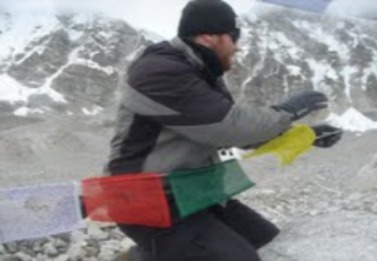
Three teachers explain why they love to hike
The road to success is a long one. It’s narrow, it’s trying, and it feels entirely longer than it is. At MVHS, students rise to new standards of achievement on their journey to the top. Three teachers, however, take this concept to another level altogether.
Hiking is an otherworldly experience. Few get to feel the euphoria, the highs of being on top of the world. Though it can be extraordinarily dangerous, the payoff often outweighs the risk. These three teachers dreamt big and did the difficult, the dangerous.
History teacher Nick Bonacorsi has hiked ever since he was five years old. His father loved the outdoors and took Bonacorsi on day-long hikes. His father was the one to acquaint Bonacorsi with hiking, hunting and fishing that became a staple of his childhood. The first real mountain hiking experience he had was in the eighth grade when he and his father bypassed the lake they were searching for while backpacking in Nevada. Since then, Bonacorsi has literally come a long way. During his journey to Nepal, he and four other friends attempted to scale the towering peak Kala Patthar.
 “It was one of the coldest segments of my life,” Bonacorsi said, “[But] a lot of [the experience] is just about the people that you go with.”
“It was one of the coldest segments of my life,” Bonacorsi said, “[But] a lot of [the experience] is just about the people that you go with.”
Math teacher Sushma Bana’s climbing career took off when she and seven other moms conquered Half Dome in Yosemite. It was Bana’s first real trek outside of the Bay Area, so she was grateful for the moral support. Since then, she has climbed Mount Dana in Yosemite, and even reached the peak of Mount Whitney, the highest in the contiguous United States.
“I go wherever I can go with a good pair of hiking boots and hiking poles,” Bana said.
One of the biggest feats she has accomplished, like Bonacorsi, is climbing Kala Patthar. It was intended to be a 13-day trek, but weather cut the hike short to nine days. The journey renewed Bana’s vigor for hiking, and Bana can’t wait to be on top of the world again.
“[Kilimanjaro, in Tanzania,] is my next big thing,” Bana said.
It is the sense of accomplishment that keeps her going back.
“You have these little highs in life,” Bana said. “In today’s world, the activities kids, or even adults, indulge in are instant gratification. Hiking is a slower payoff. This is a sport which is not instant—it’s slow and steady.”
Math teacher Jon Stark has been hiking for a long time—since the 1970s. Ever since his college days in Colorado, he has seen much of the Rocky Mountains. A true Coloradan, he has explored many of the mountains around those parts, including the “fourteeners” (mountains over 14,000 feet high). Now he has taken that one notch further.
Stark is a mountaineer. He scales mountains covered in thick ice, which requires all of the customary equipment—ice axes, cramp-ons, harnesses—the whole nine yards. He has been a mountaineer since he made the switch from hiking about three years ago.
“I got interested in expanding, moving toward doing something that involved not just dirt and rock, but also have glaciers on them,” Stark said.
On Dec. 27, Stark plans to be standing on top of the tallest peak in the western hemisphere, Mount Aconcagua, Argentina—not by any means an easy climb. It fits into the December break, however, and is made somewhat easier by the fact that it will be summer in South America then.
After that, Stark has set his sights high—he hopes to climb Mount Denali in Alaska, as well as the world-renowned Matterhorn in Switzerland. Perhaps he may even try his boots on Vinson Massif, the highest peak in Antarctica.
There’s no denying his mountaineering success in and outside of the United States, from Mount Shasta to Mount Kilimanjaro. But one doesn’t get to Aconcagua in a day. The best thing any climber can do, beginner or expert, is to keep going.
“Too few people appreciate how easy it is to get started in this and how rewarding it is,” Stark said. “It’s a wonderful thing to get out to see a bit of nature, to appreciate a little better, to get away from the pressure of life… and [still to] challenge [oneself] along the way.”
{cc-by-nc-sa}








